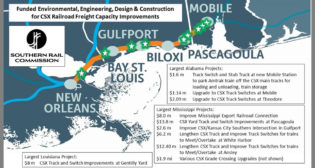
Mexican President Opens First Section of Mayan Train
Written by Kevin Smith, Editor-in-Chief, International Railway Journal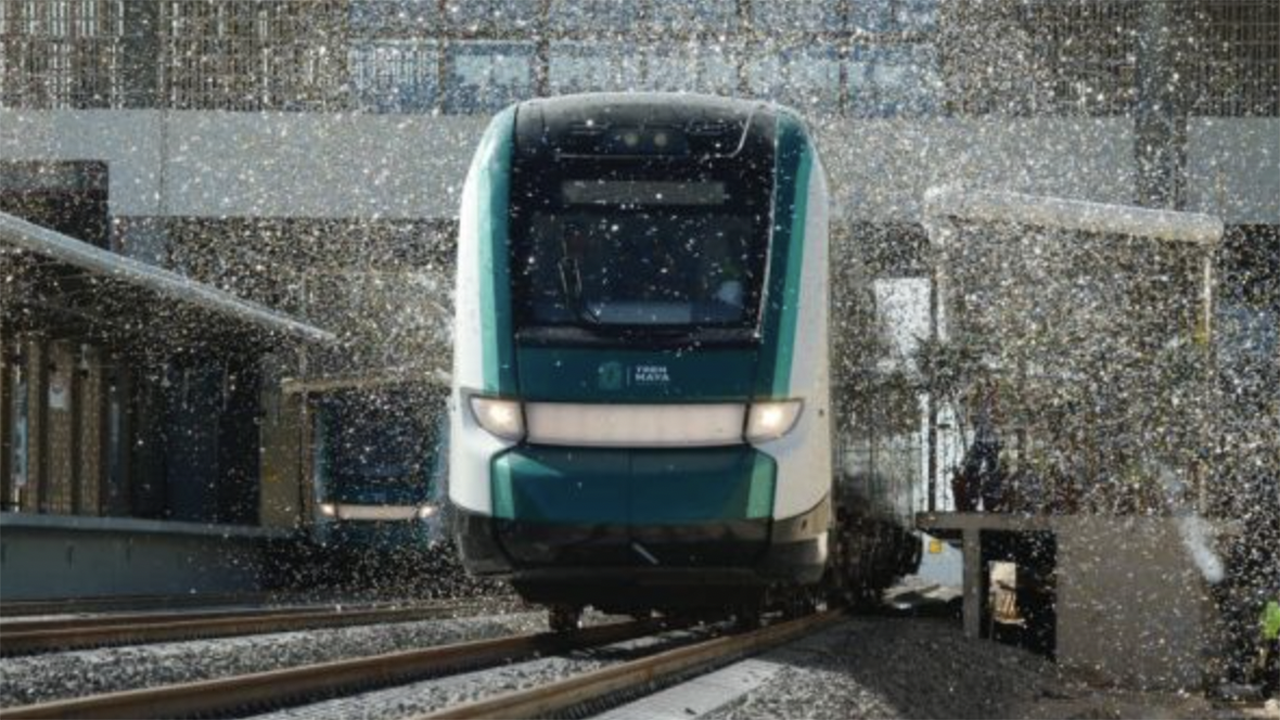
The inauguration ceremony was held at San Francisco Campeche station. (Government of Mexico Photograph)
Four trains per day are currently operating on the 294-mile (473-kilometer) line between San Francisco de Campeche and Cancun Airport.
The President of Mexico, Andrés López Obrador, officially opened the first 294-mile (473-km) section of the Mayan Train project from San Francisco de Campeche to Cancun Airport on Dec. 15, just five years since work on the project commenced and three-and-a-half since the start of construction.
Passenger journeys on the line, which serves 14 stations in the provinces of Campeche, Yucatán, and Quintana Roo, commenced the following day with two services departing at 07.00 and 11.00 from San Francisco de Campeche and Cancun Airport. It was originally hoped to operate six return trains from the start of service.
Obrador described the project as a “magnum opus,” and said: “We are not exaggerating if we say that there is no such work in the world today.”
Work comprised restoring railway infrastructure to the existing right of way from San Francisco Campeche to Izamal, and new line construction from Izamal to Cancun, much of which is located in the median of the six-lane highway from Valladolid to Cancun.
The initial stretch comprises sections 2, 3 and 4 of the project. Work on section 2 from Escárega to San Francisco Campeche and Calkiní has been led by Mexican group, Grupo Carso; section 3 from Calkiní to Izamal has been delivered by a consortium of Construcciones Urales and Grupo Indi; and section 4 from Izamal to Cancun has been led by ICA. The Mexican Army has delivered section 5 North from Cancun to Cancun Airport, which remains under construction from the airport to Playa de Carmen.
Operation on the southern portion of section 2 from San Francisco de Campeche to Escárcega and on section 1 from Escárcega to Palenque is due to commence on Dec. 31. Work on section 1, which also involved restoring the former freight line, has been conducted by Motal-Engil Mexico and China Construction CC.
Work on the initial section has included the installation of 1,147 miles (1846 kilometers) of rail, 1.6 million ties, and required the movement of more than 69 million m3 (cubic meters) of land in Campeche, Yucatan, and Quintana Roo. There are 362 vehicle, general, pedestrian and wildlife crossings. In addition, 12 archaeological zones located along the site of the railway have recovered thousands of artifacts.
Depots are located in Teya and Hampolol, along with two maintenance facilities in Teya and Valladolid, and a further workshop and yard in Cancun.
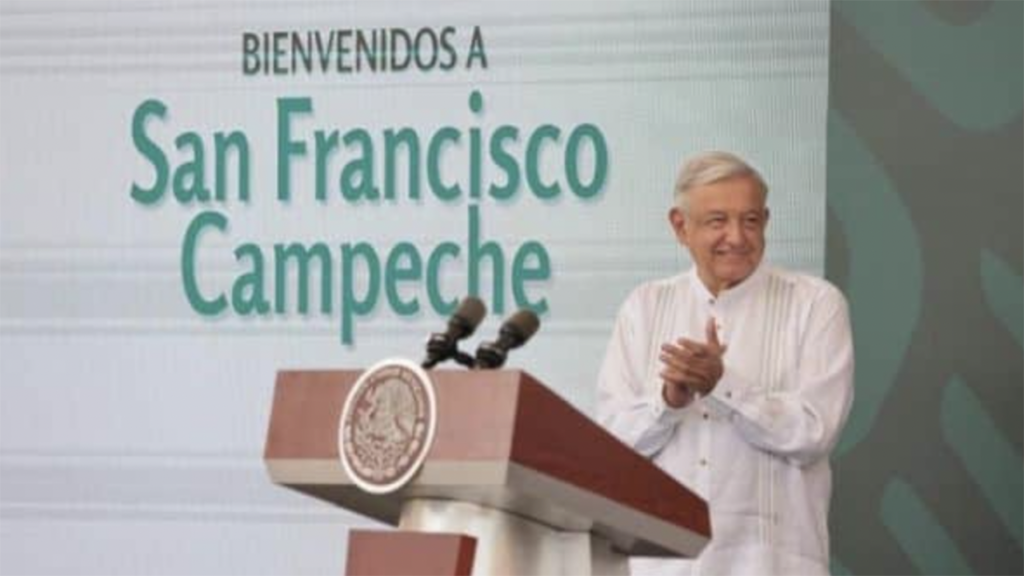
More than 80% of the professionals working on the project are between 21 and 30 years of age, with 211 from the Yucatan peninsula and 310 from the rest of Mexico. There are currently 20 train drivers, three trainers, and 30 railway traffic managers and railway technical personnel available to work on the railway, with all of them certified by Mexico’s Railway Transport Regulatory Agency.
Operation is initially taking place with diesel trains. However, work is continuing to electrify the inaugural section of the line with more than 75% of the catenary masts required now in place.
Olmeca-Maya-Mexica, a state-owned company under army control, is operating the service. The company also operates hotels, national parks, an airline and a dozen airports. Obrador said that one of the key objectives of the project is to boost domestic and international tourism and economic development in the southeast of the country. He said that the operator would offer affordable tourist packages, prioritizing national tourists, and that train tickets would be kept below the cost of buses.
The cost of a ticket from Campeche to Cancun is Pesos 1166 ($67.59) in standard class and Pesos 1862 ($107.78) in first class for the six-hour trip, which is equivalent to the same journey by car. Around 6,600 passengers per day are expected to use the train during the pre-operation stage.
The cost of the overall project is now estimated at more than Pesos 515 billon ($29.81 billion). The Mexican Ministry of Finance has already disbursed Pesos 400 billion ($23.15 billion) and another Pesos 74 billion ($4.28 billion) will be allocated before the end of next year. Obrador stated during the opening that the costs would be confirmed in “due course” and that the project has not placed any debt burden on the state, adding that it will “break even” in three or four years.
“It wasn’t credit, it was public investment,” Obrador says. “Nothing is owed to the Mayan Train, nothing. This is a work of the people of Mexico and that is why we are all going to take care of it. It is a work of all Mexicans to greatly help the development of the southeast.”
Alstom has so far delivered six 160 km/h (99 mph) Xinbal standard[DB1] four-car trains for the project, the most recent of which was delivered on Dec. 10. The manufacturer is supplying 42 trains comprising 219 cars of three different configurations as part of €1.3 billion ($1.42 billion) contract for railway systems signed in May 2021. It confirmed in July that it will complete delivery of the fleet by the end of the fourth quarter of 2024. Alstom has also been responsible for installing ETCS Level 1 across the line.
Each train is equipped with air-conditioning, ergonomic and reclining seats, video surveillance systems, and passenger information screens, with dedicated spaces for luggage storage. The trains are fully accessible for disabled passengers.
“This service may undergo variations during the pre-opening stage and, naturally, train functionalities and speeds will be adjusted,” says General Óscar David Lozano Águila, General Director of Mayan Train.
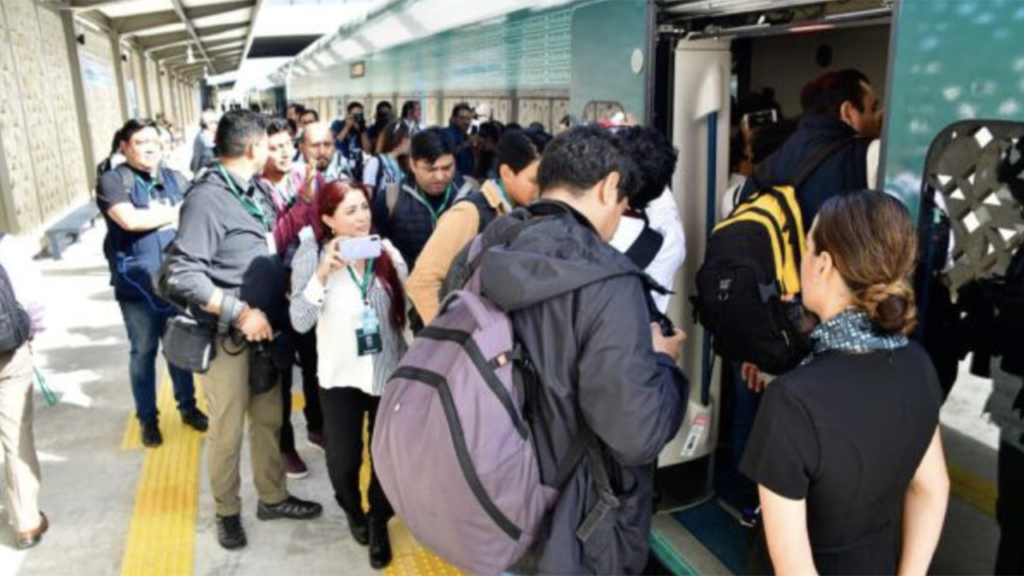
Concerns
The project has been criticized for environmental damage, soaring costs and a lack of transparency. Obrador instructed the army to take over leadership of the project from the National Tourism Development Fund (Fonatur). He also issued a presidential decree to make the project a national security priority after it ran into legal obstacles, including over environmental issues, which had forced the suspension of work and changes to the route.
Concerns have since been raised over pushing ahead with construction without completing full environmental surveys due to the condition of the ground on the Yucatan peninsula, which mostly consists of porous limestone and is structurally fragile.
The president is attempting to complete various infrastructure projects ahead of the Mexican general election next June. Local media reports suggest that many of the 14 stations to open are noticeably incomplete, and train speeds are currently limited to a maximum of 110 km/h (68 mph), compared with a design speed of 160 km/h (99 mph).
The Next Step
The remainder of sections 5 as well as sections 6 and 7 of the project, the 386-mile (621.3-kilometer) stretch from Cancún Airport to Tulum, Chetumal Airport, and Escárcega, are scheduled to open Feb. 29, Aguilar confirmed Dec. 11.
Section 5 South runs from Puerto Aventuras to Playa del Carmen and is being delivered by Mota-Engil Mexico (subsection A); Azvindi Ferroviario (subsection B); and ICA (subsection C). The army is responsible for sections 6 and 7.
Section six comprises 158 miles (255 kilometers) of electrified double-track and five stations from Tulum to Chetumal, including a 5-mile (8-kilometer) elevated section. Section 7 runs for 159 miles (254 kilometers) from Bacalar to Escárcega.
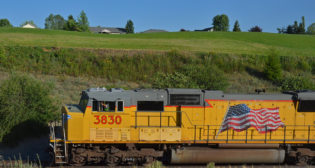
![“This record growth [in fiscal year 2024’s third quarter] is a direct result of our innovative logistic solutions during supply chain disruptions as shippers focus on diversifying their trade lanes,” Port NOLA President and CEO and New Orleans Public Belt (NOPB) CEO Brandy D. Christian said during a May 2 announcement (Port NOLA Photograph)](https://www.railwayage.com/wp-content/uploads/2024/05/portnola-315x168.png)

